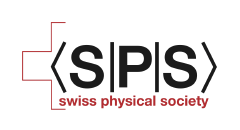YPF 2019 - Quantum Information at Basel
3rd - 5th May 2019
In the middle of Basel, amidst the rhein and the suburbs, lies a place where the most prolific mathematician of all time gave the world the fundamental basics of modern calculus, I am speaking of course of Leonhard Euler. Besides Euler, the city is also cradle of the most famous family of mathematicians and physicist of time, the Bernoulli dynasty. Founded on 4 April 1460, Basel University is Switzerland's oldest university and among the world's oldest surviving universities. This is the destination for YPF 2019.
The first lecture was on Friday afternoon, in the Bernoulli auditorium of the Department of Physics. It was about Bell non-locality, given by Dr Jean-Daniel Bancal, maitre-assistant at the University of Geneva. Since the inception of quantum theory, several of its counter-intuitive predictions have led to question this theory. More than fifty years ago, a result by J. S. Bell showed that some of these strange phenomenons had much more profound consequences than first anticipated. This caused a reexamination of basic principles which turned out to shed new lights on a variety of subjects, such as randomness or the necessity to describe systems accurately. The main strange phenomenon was the Einstein-Podolsky-Rosen (EPR) paradox which introduce in a 1935 paper the concept now known as quantum entanglement.
In a quick overview, we have seen how fundamental insights on quantum theory have led to some of these developments and ultimately open the way for new quantum technologies. To have more information about the Bell nonlocality, a review is available at https://arxiv.org/abs/1303.2849.
After the talk we headed towards the Bernoulli-Euler museum, where we had the chance of see first hand the works of Euler and the Bernoulli family.
In the evening we had dinner together at Mel’s bar, an amazing 90s dinner that is located very near the Physics Department. We had time to exchange our thoughts on various topics, from physics to politics for the rest of the night. This was the perfect opportunity to learn more about each others work and how do we plan to continue our careers in physics.
At the end of the evening we enjoyed the good weather while some headed back to the Hotel, others enjoyed playing board games or having a taste of Basel’s night life.









The second day began with a delicious breakfast, too early for some, just before the talks started. The days was a long day, having 5 talks scheduled from 9am to 6pm. The day was full of interactive discussions and very animated coffee breaks where the students could share questions and experiences with the speakers.
The talks started with Prof. Philip Treutlein, who talked about the Einstein-Podolsky-Rosen paradox (also known as EPR paradox). He explained that traditionally, the EPR paradox is presented considering the quantum entanglement of two particles, but in principle nothing prevents the entanglement of many body systems. In his talk, Prof. Treutlein showed us how using advanced techniques, including magnetic traps for atoms, precise laser spectroscopy and ultra cold atoms, one can actually create such entangled system and prove that it displays correlations beyond what classical physics allows.
We then moved to the the talk by Prof. Dominik Zumbühl who offered who us a wide review of the current state of quantum information research. Rather than focusing solely on the subjects being explored, he also give us a glimpse of more technical aspect: financing of the research, corporations and start-ups active in the field and possible technologies invented for the research that could be, or already are, commercialized. Of course Prof. Zumbühl also briefly presented us the different research topics he and his group are currently investigating, including the creation of single electron qubit, with a single isolated electron which spin can be controlled and read.
Speaking of which, we then visited the lab where these are developed and we were presented more concretely what the devices needed to achieve such an incredible level of control. For example, on the topic discussed during the talk is how to achieve and maintain micro Kelvin temperature on relatively big objects, as higher temperature would give the trapped electron enough energy to flip spin or escape its trap, implying a total loss of control over it.
Later on after a plentiful lunch, courtesy of the Physics Department of the University of Basel, we heard about the research of Dr. Marta De Luca, which is about developing nanowires for the usage in quantum cryptography. Quantum cryptography is a safe form of communication in the sense that spying from a third party is noticed by the sender as well as the receiver and the flow of information can be terminated. For this technology, single photon sources are needed. Faint laser pulses, single atoms or single molecules can be used as sources. She told us about quantum dots, the nowadays smallest quantum structure which can produce single photons. Placed into the filament crystal of nanowires single photons can be produced most efficiently and with the least absorbance in the surrounding material. Many technologies such as biological sensors, optoelectronics and thermoelectric materials find use for nanowires combined with quantum dots.
We then took a short break and continued with the next talk from Prof. Jelena Klinovaja. She is occupied with condensed matter theory and quantum computing, which she presented us in an exciting and very interesting talk. Since she is working for quite a long time in her field (with more than 80 publications in the past 9 years), and has been honored several times, being a well-known scientist, she could gave us a lot of insight in the latest topics and questions regarding quantum computing. We also had a chance to hear about her current research, which is about topological effects and spin phenomena in quantum theory of condensed matter systems. Her group is researching the insulators and their properties in different physical systems. I.e. in non-uniform magnetic fields and superconductivity.
After this fascinating talk we made another break and then listened to Prof. Renner that made our heads spin with different Gedankenexperiments, the most interesting of which was Frauchiger-Renner paradox, in which he asked us the question: Can quantum mechanics be used to describe a physicist who herself uses quantum mechanics? Clearly, if quantum mechanics were a universally valid physical theory, the answer should be yes. But obviously that is not very straighforward. He used a system of computers that were a sort of quantum agents to show that after a process the agents’ conclusions, although all derived within quantum theory, are inconsistent. Thus indicating that quantum theory cannot be extrapolated to complex systems, at least not in a straightforward manner.
As it happens most of the time in physics, some cats were added to the discussion.
After such a long and very interesting day we headed to our fancy dinner in the center of Basel, Prof. Renner had dinner with us and we had the opportunity to get to know more about his research and how he got interested in quantum information theory.















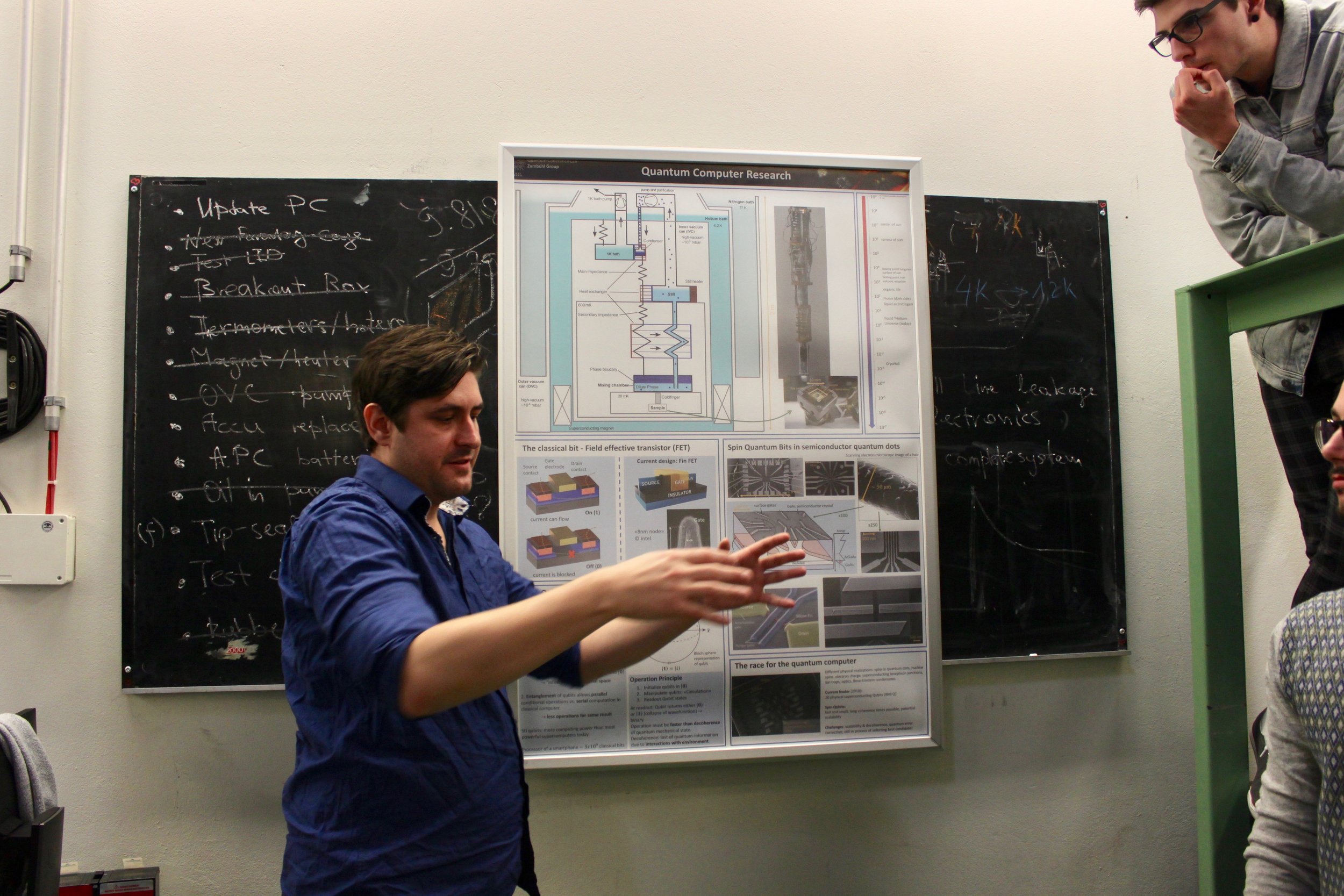
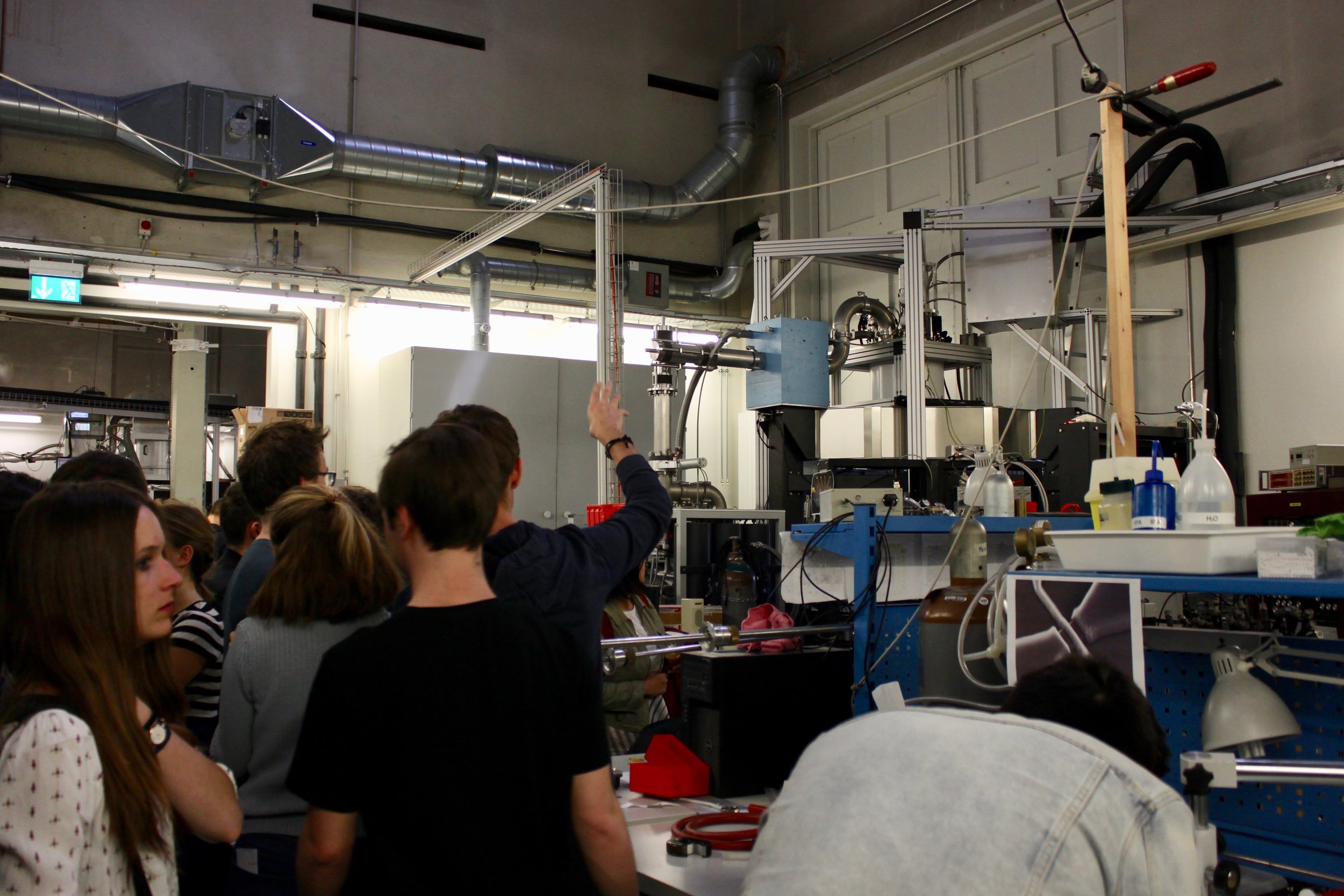



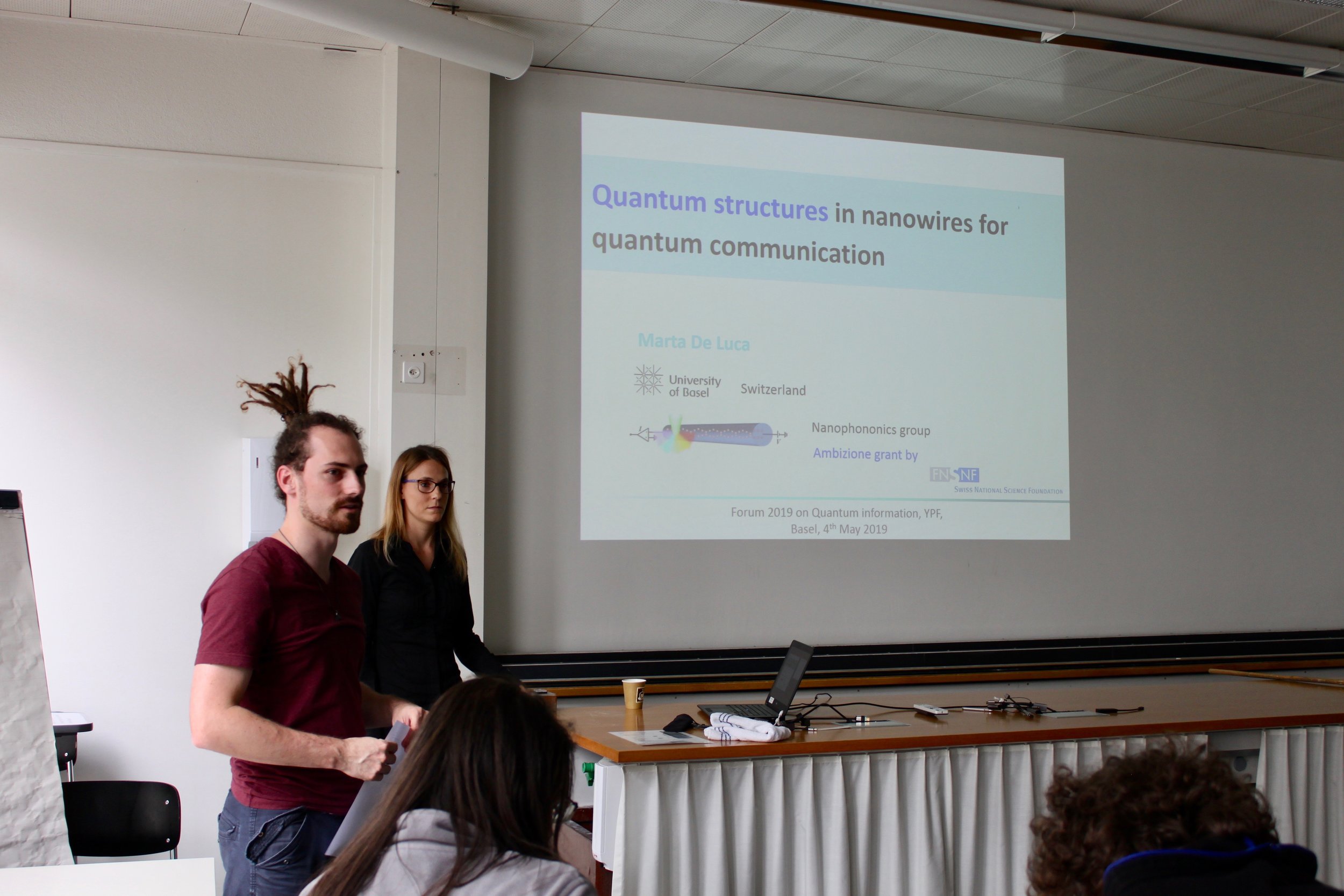



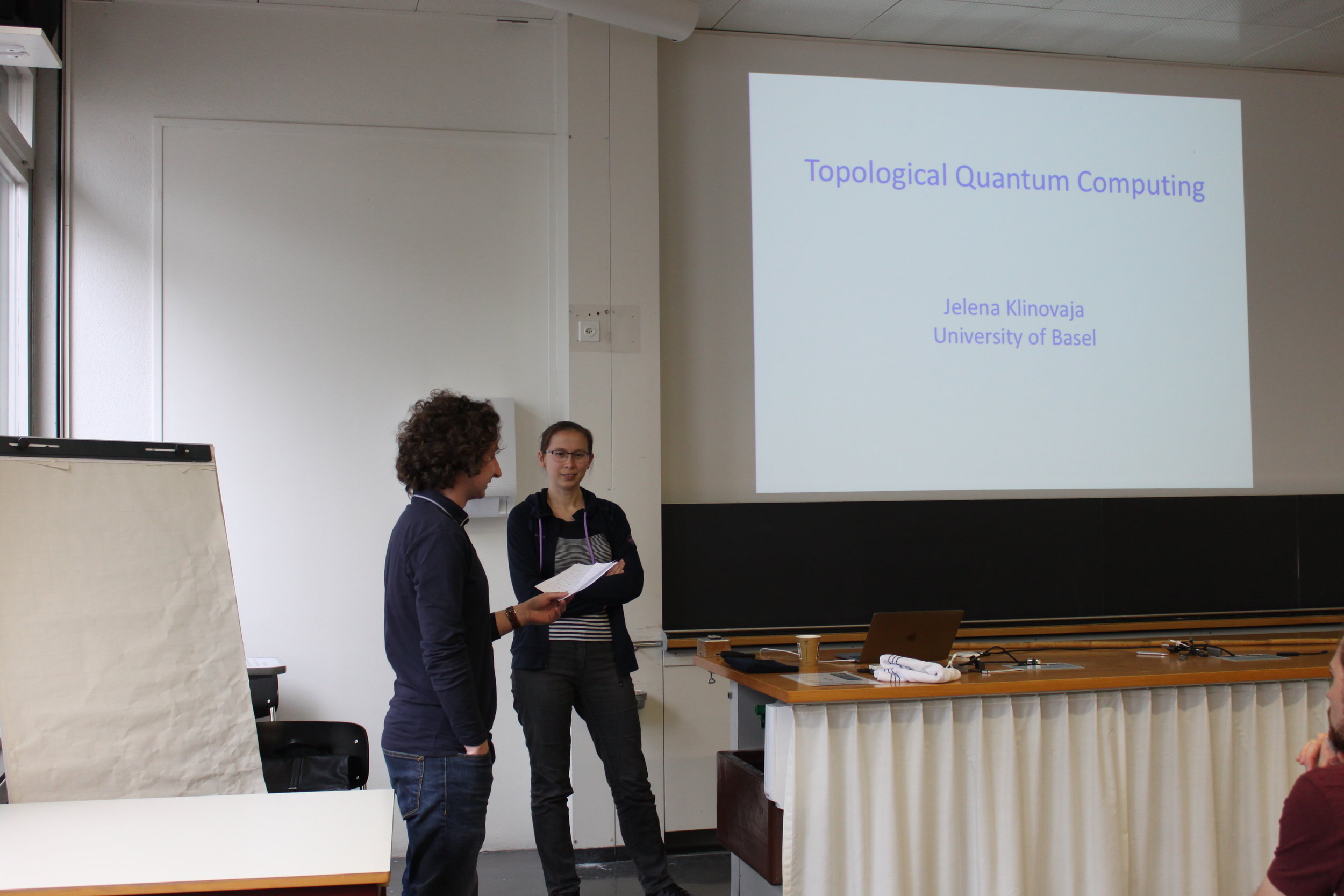

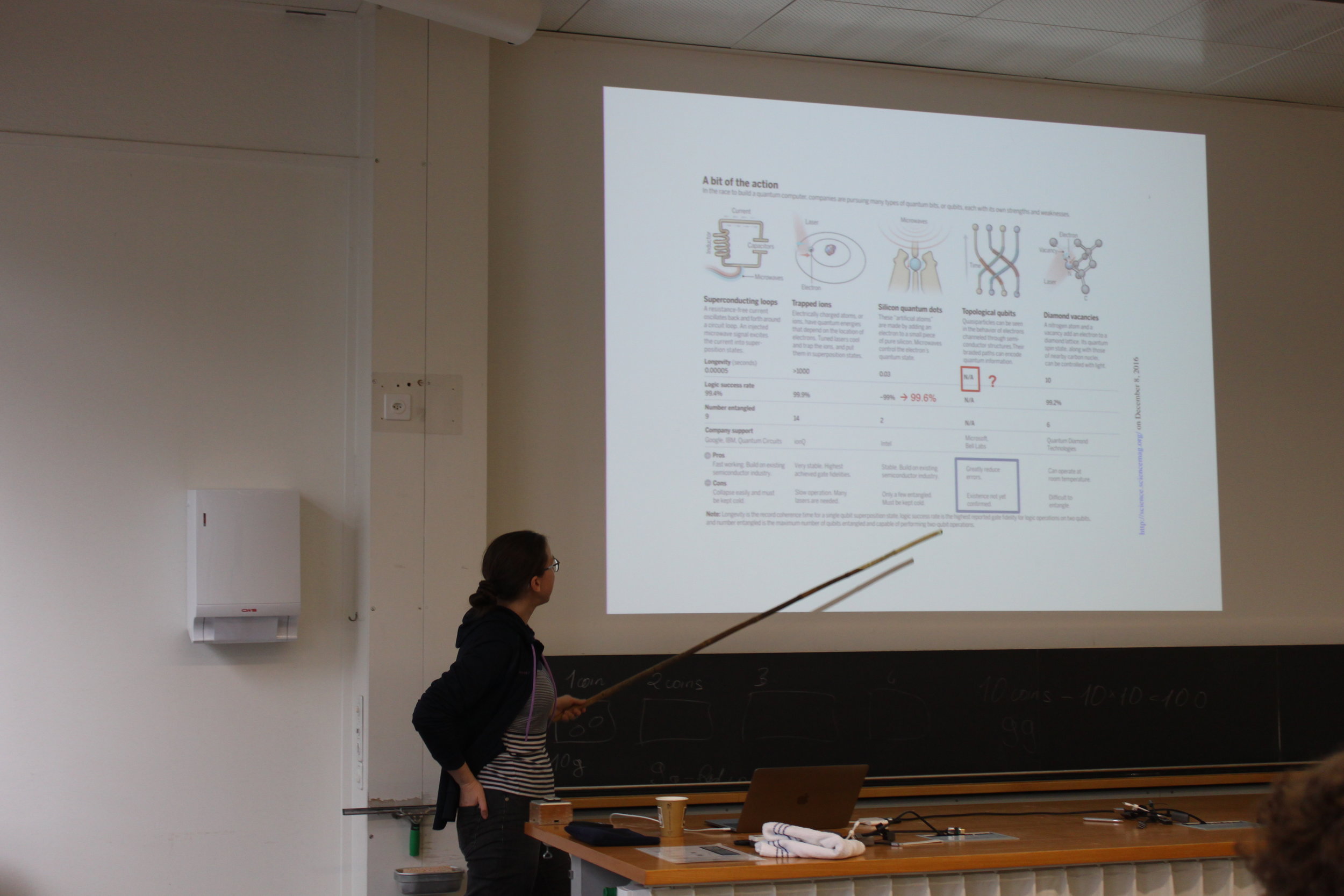

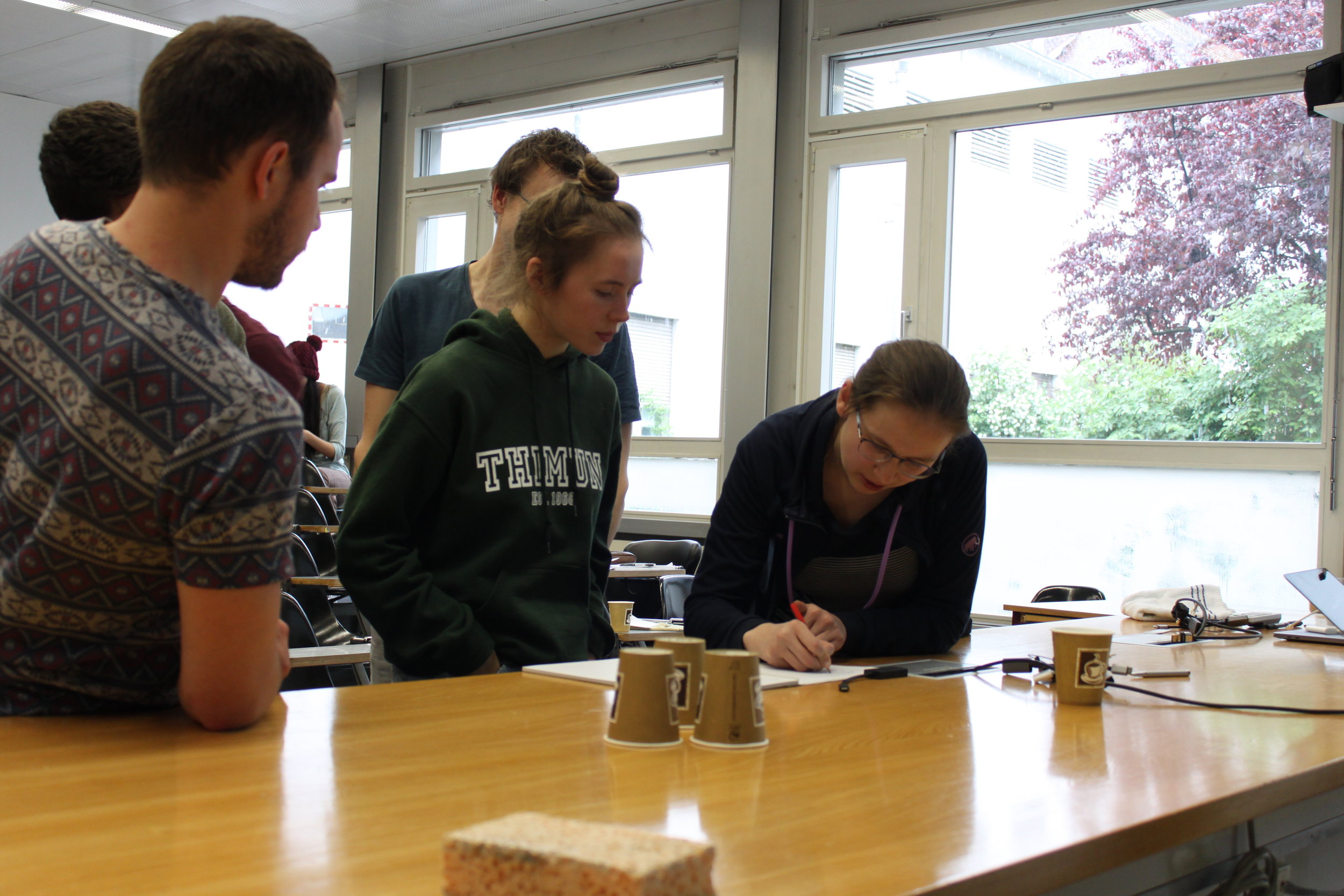


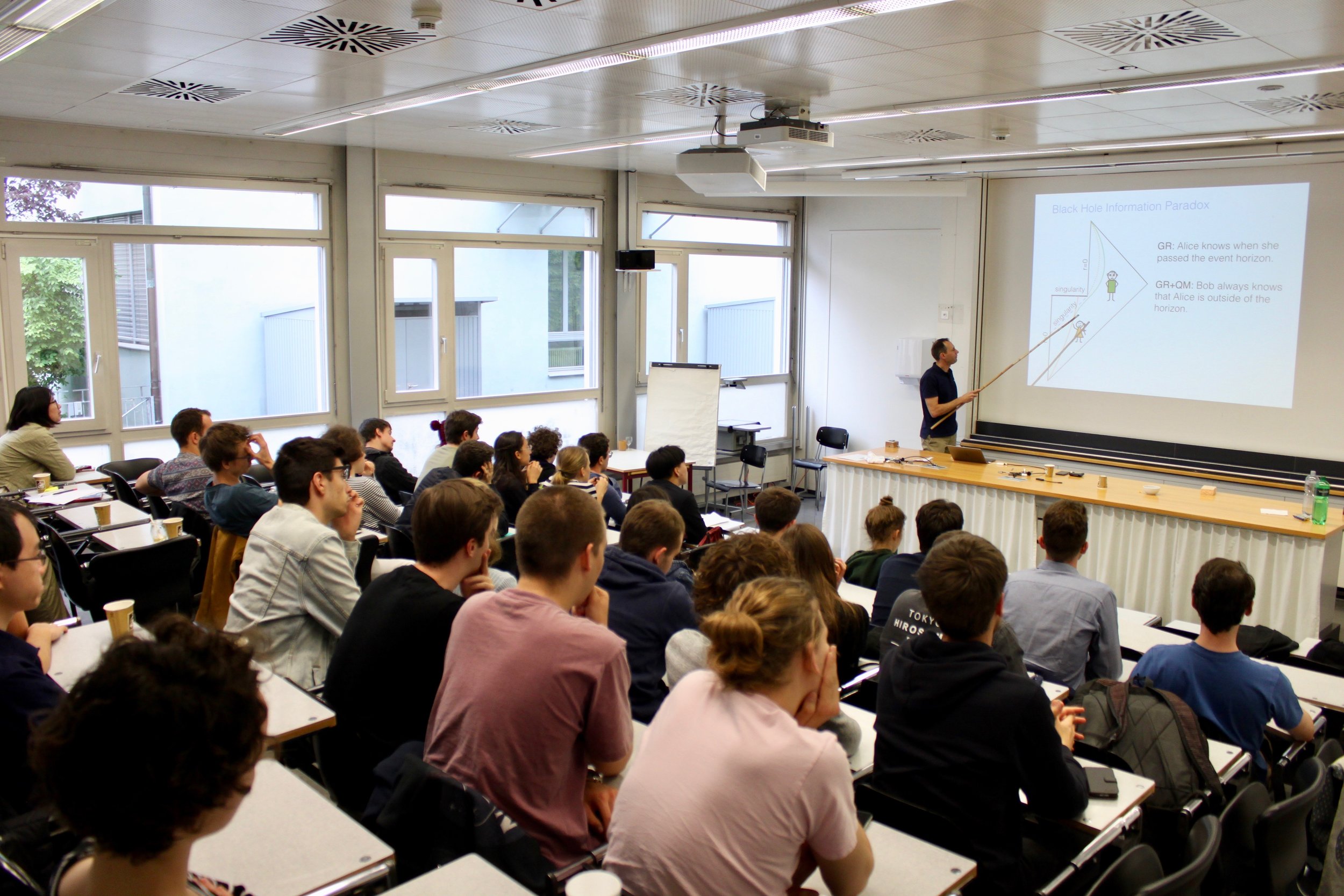

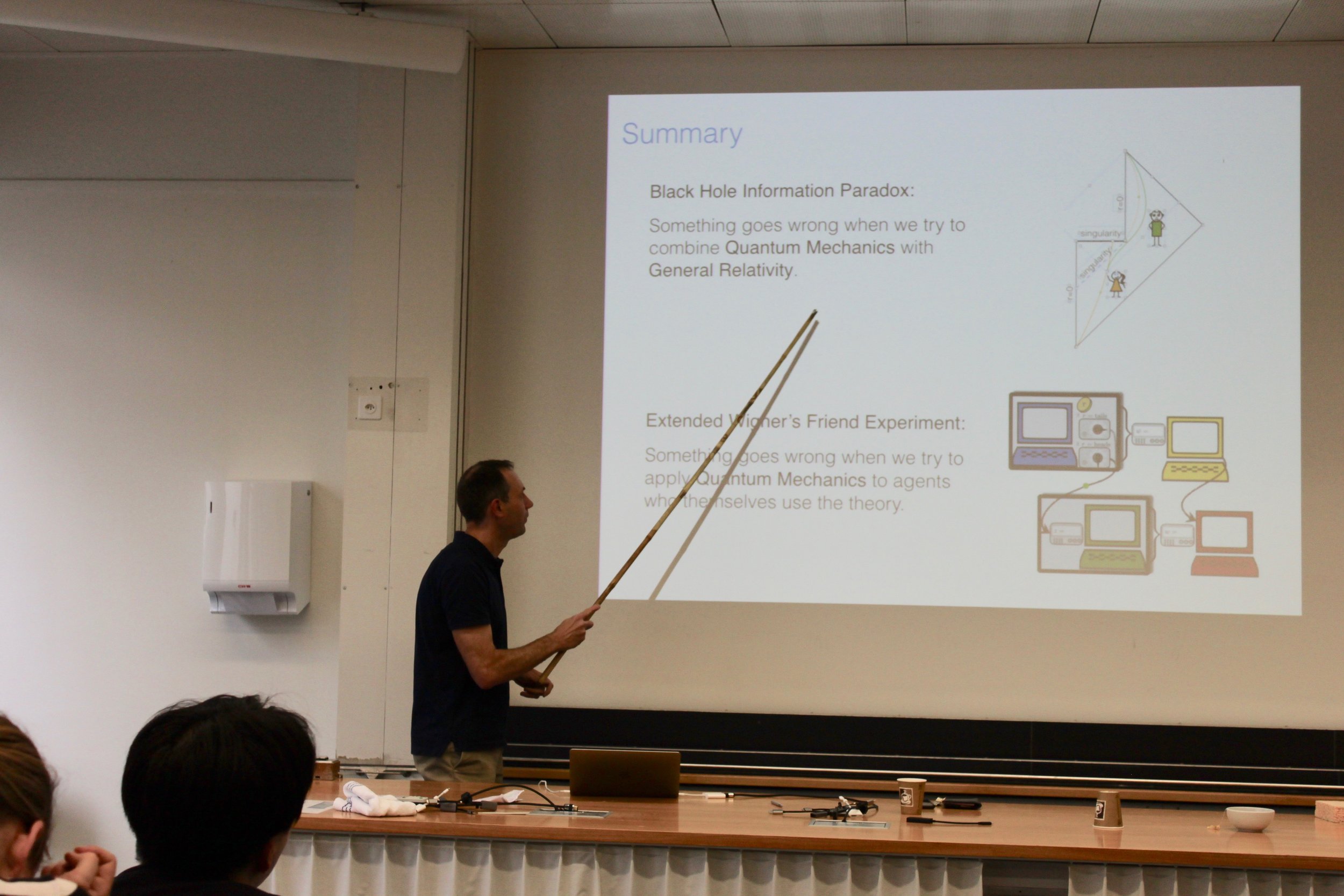



At Sunday morning, after breakfast, the last presentation of the weekend took place. Prof. José A. Flores Livas introduced the students into his field of research, namely computational condensed matter theory. One important part in his work is done with supercomputers. Nevertheless cheap algorithms to compute the structure of materials are very important, given that his work requires a lot of computer power.
Since new approaches are always welcome in this scientific area, he encouraged the participants during a brainstorming session about the questions he is currently working on. He emphasized that usually young students do not have prejudices in this field what leads sometimes to interesting new ideas.
Another fundamental part of his work are the material structures that he studies, these can be really tricky to visualize, so his research group started to develop programs for using virtual reality. Some of them were presented to the students who were able to play around and experience first hand with VR glasses during the breaks.
In the last 30 minutes he told about being a young scientifist and how he handled it to travel around half the world for his research. This presentation was one of his last action at the University of Basel, in summer the next step of his career took him to Italy, where he has moved to become an Assistant Professor.
After such an amazing event what better to close it with a new tradition. We took the first group photo of the YPF history, we expect that this tradition keeps up to be shared by future forums.












Pictures © 2019 Johannes Wüthrich


